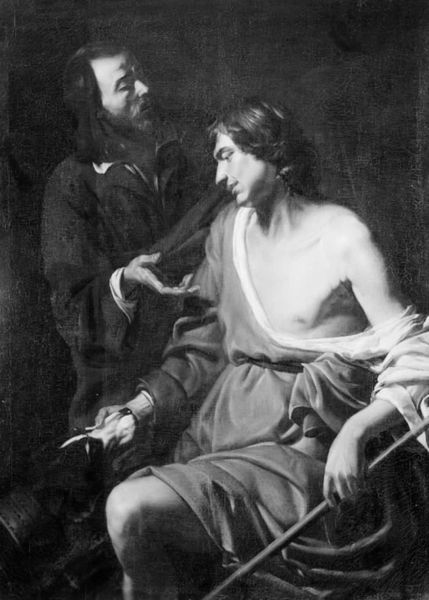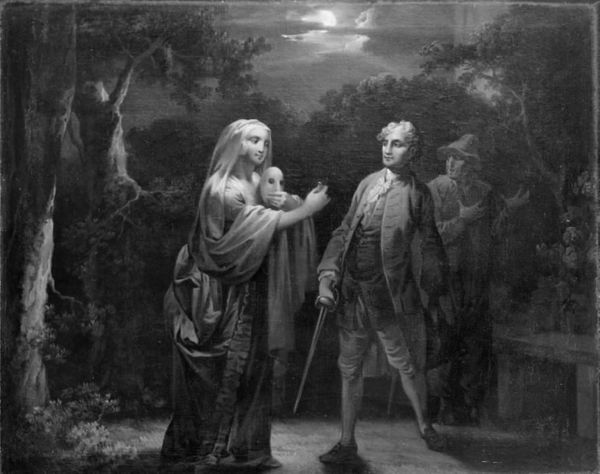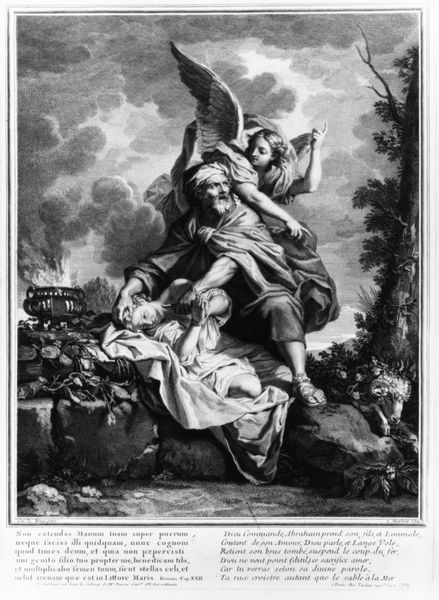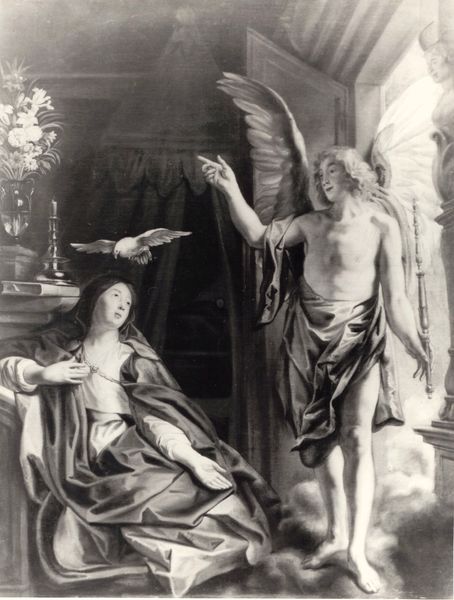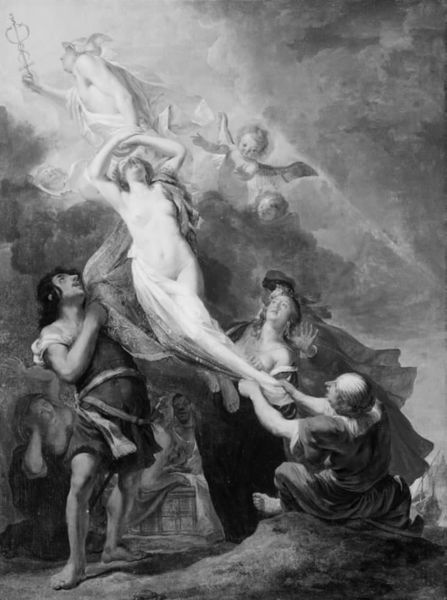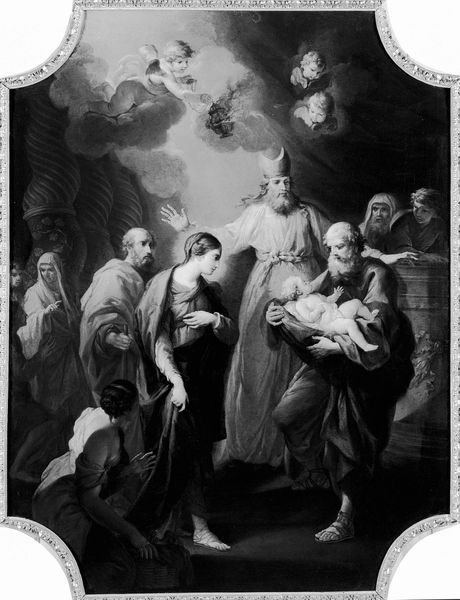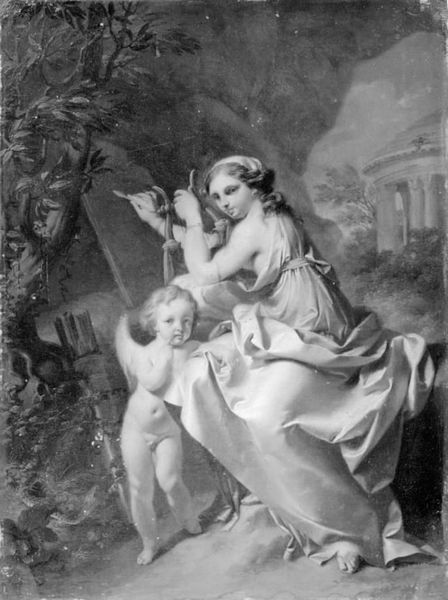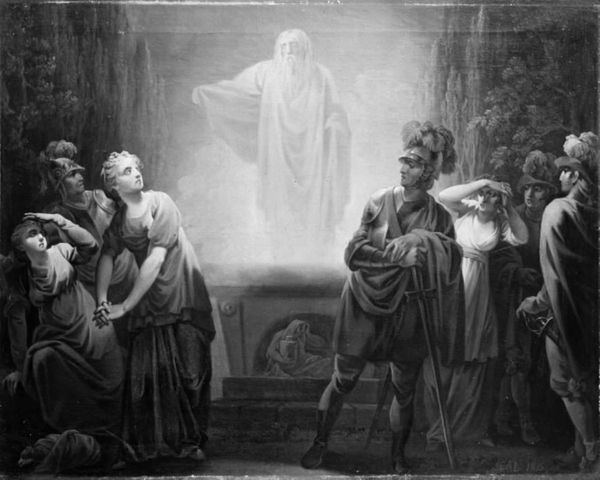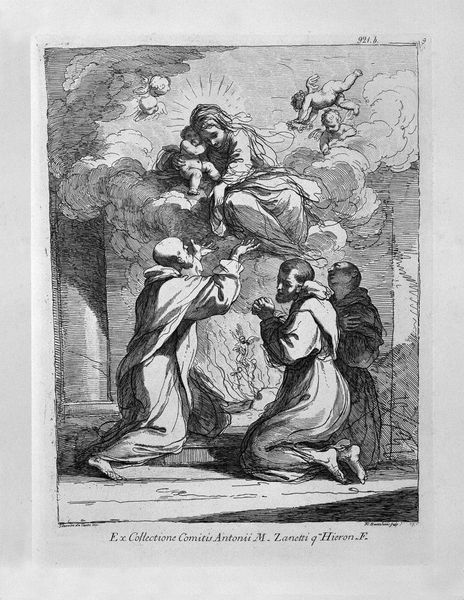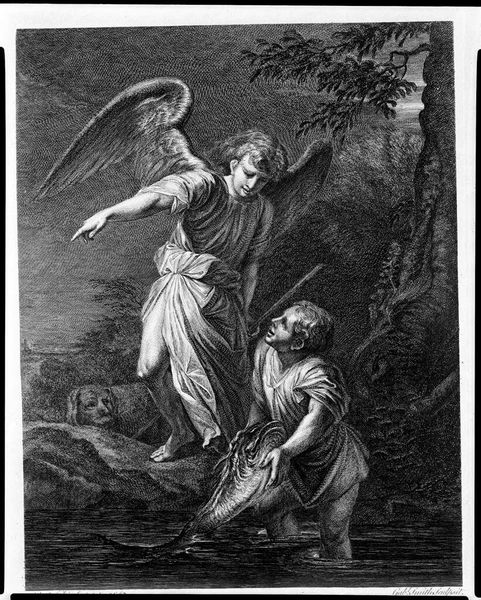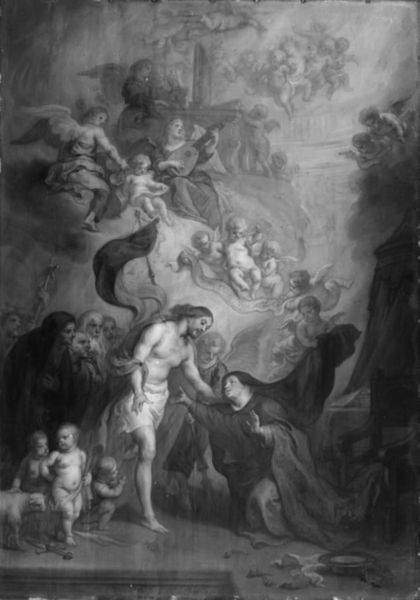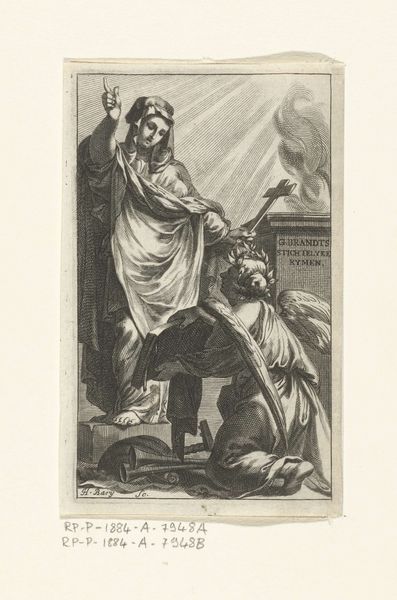
painting, oil-paint, canvas
#
allegory
#
painting
#
oil-paint
#
black and white format
#
figuration
#
fantasy
#
canvas
#
romanticism
#
black and white
#
history-painting
Dimensions: 214 cm (height) x 163.5 cm (width) (Netto)
Curator: A striking vision, isn't it? Carl Christian Seydewitz completed this canvas titled "Christ in the Garden of Gethsemane" in 1829. Editor: Stark. Dramatic contrasts of light and shadow immediately create a sense of turmoil. You can almost feel the weight of the scene pressing down. Curator: Absolutely. Seydewitz uses this dramatic chiaroscuro, so characteristic of Romanticism, to heighten the emotional intensity. The Garden of Gethsemane, in Christian tradition, represents Christ’s agony before his arrest and crucifixion. This is a moment laden with immense spiritual significance. Editor: I notice the angel bathed in light seems almost ethereal. It seems that they are a figure both within the scene and apart from it, representing divine intervention, perhaps? I'm curious about how this scene plays into the Romantic movement's fascination with the sublime. Curator: The angel, luminous against the darkened landscape, is indeed a key symbol. Traditionally interpreted, it represents comfort and divine support offered to Christ during his torment. But Seydewitz renders this interaction in such a way that the psychological burden on Christ takes center stage. Note his posture—resigned yet pleading. It reflects the introspective turn many artists explored during the Romantic era, emphasizing the individual's emotional experience in the face of grand, almost overwhelming forces. Editor: It's fascinating how Seydewitz uses the visual language of the era—the swirling clouds, the stark contrasts—to reinforce the emotional and theological themes at play. One wonders how audiences at the time interpreted this. Curator: Indeed. As an altarpiece in the church of Hyllested, "Christ in the Garden of Gethsemane" would serve not merely as an aesthetic object, but also as a prompt for contemplation on themes of sacrifice, faith, and human frailty. The artist would consider the piece as speaking to an established theology, but perhaps he allows his own experiences of torment to find representation on the canvas, which makes it accessible to a broader, contemporary audience as well. Editor: A piece ripe with layers, prompting considerations about the public display of personal devotion and historical memory shaping the viewer's experience of a sacred moment. Curator: A profound convergence, reflecting a historical intersection of faith and artistic innovation.
Comments
No comments
Be the first to comment and join the conversation on the ultimate creative platform.
